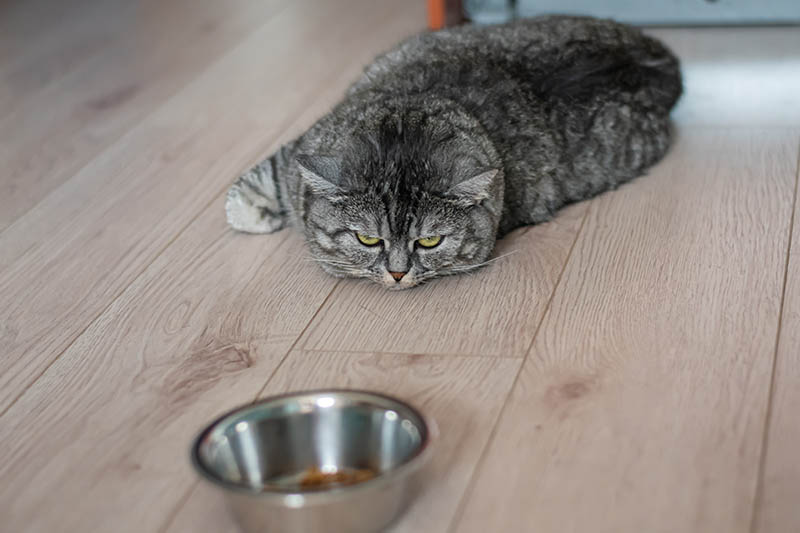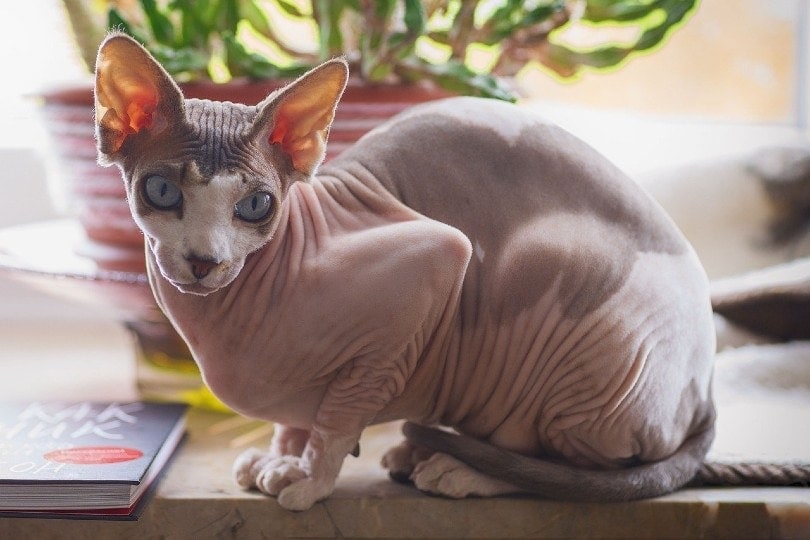Ragdoll Tortoiseshell Cat: Pictures, Facts, Origin & History

Updated on
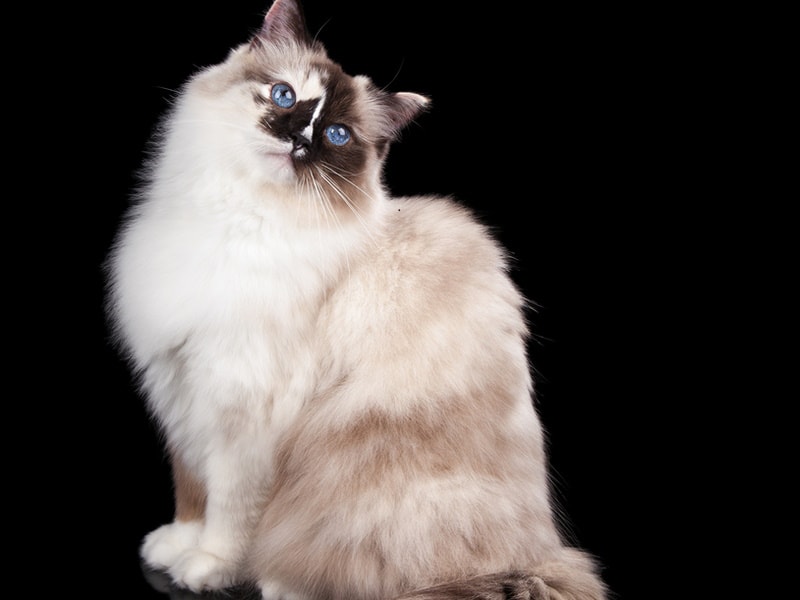
Ragdoll cats are the sweethearts of the feline world. The name itself hints at how lovable this breed is—it goes limp like a ragdoll when picked up!
It’s also an exquisitely beautiful breed. Ragdolls are large cats with long, thick fur that flows like silk. Bright blue eyes are standard for the breed. Their coats are primarily white, accented with a wide variety of color points and patterns.
Tortoiseshell is just one of these many patterns, an intricate blend of orange and black patches in various shades. Let’s take a closer look at this gorgeous pattern and the Ragdoll cats that showcase it.
The Earliest Records of Ragdoll Tortoiseshell Cats in History
During the 1960s in Riverside, California, a breeder named Ann Baker started developing the breed from free-roaming cats1. Ann found a neighborhood stray named Josephine, a white and long-haired female cat. She bred Josephine with other cats she had.
Josephine’s kittens turned out to have a wonderful temperament combined with the long and thick coat of their mother. Ann continued her breeding program by selecting cats with the most desirable traits, such as the beautiful coat and docile nature.
These cats eventually became the Ragdoll cat breed we know and love today.
How Ragdoll Tortoiseshell Cats Gained Popularity
Given this breed’s beauty and gentleness, it was only a matter of time before Ann Baker’s strays became one of the world’s favorite feline pets. In 1969, Ann sold the first Ragdoll breeding pair to Denny and Laura Dayton2.
The cats were named Rosie and Buddy, and many of today’s Ragdolls can trace their roots to this pair. Denny and Laura’s love for the breed inspired them to form the Ragdoll Society. They also created the very first Ragdoll Genetic Chart, as well as the first-ever Ragdoll Cat Newsletter.
All of these efforts helped promote the Ragdoll breed and its official recognition in various feline associations. Since then, Ragdoll cats have consistently topped the list of the most popular breeds over the years!
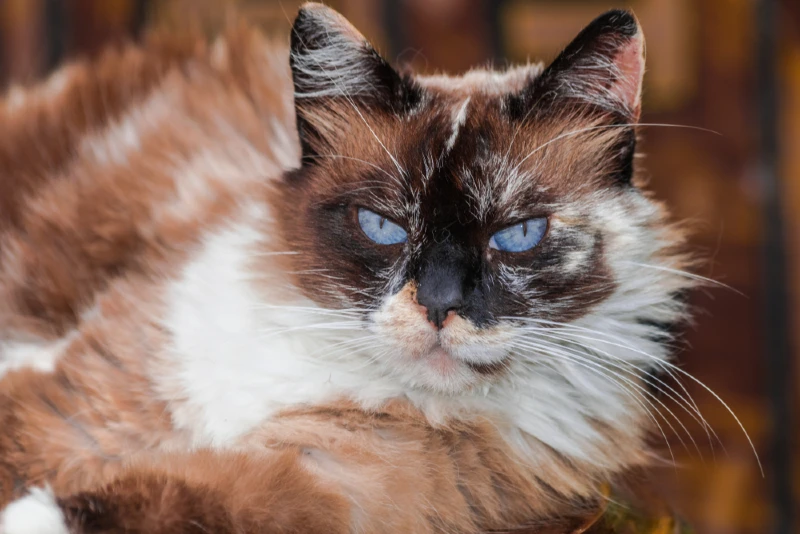
Formal Recognition of Ragdoll Tortoiseshell Cats
The Cat Fanciers Association (CFA) formally recognized the Ragdoll cat breed in 1998, and this includes Ragdoll Tortoiseshells.
Ragdolls have also received official recognition from major cat registries all over the world, including:
Ragdoll Tortoiseshell cats also have their sub-category in the CFA’s coat standard for the breed. Tortie Ragdolls fall under the parti-color and lynx point color pattern. The CFA accepts Chocolate Tortie Ragdolls, Seal Torties, and other combos.
Top 4 Unique Facts About the Ragdoll Tortoiseshell Cat
1. All Ragdoll Tortoiseshell Cats Are Born White
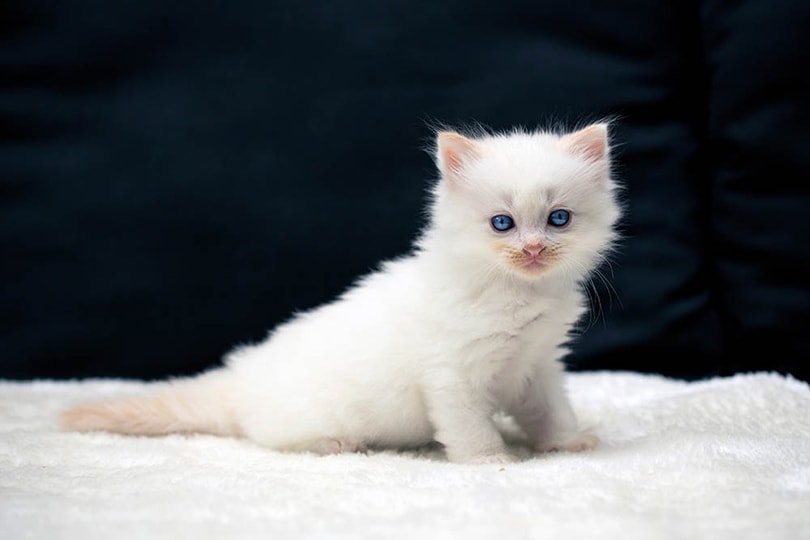
All Ragdoll kittens come out white. The color points start to show within a few weeks, and it’s set for life. That means a Tortie Ragdoll will keep its Tortie pattern forever, even if the hues change as they age. Still, it can take up to two years for a Ragdoll’s complete color pattern to develop.
2. Male Ragdoll Tortoiseshell Cats Are Rare
The tortoiseshell pattern requires two X chromosomes to manifest, which is why most Torties are female regardless of the breed.
3. Ragdoll Torties Act More Like Dogs
Ragdolls are basically dogs in cat form! These cats prefer human company, and they can even learn basic commands like ‘sit’ or ‘fetch’.
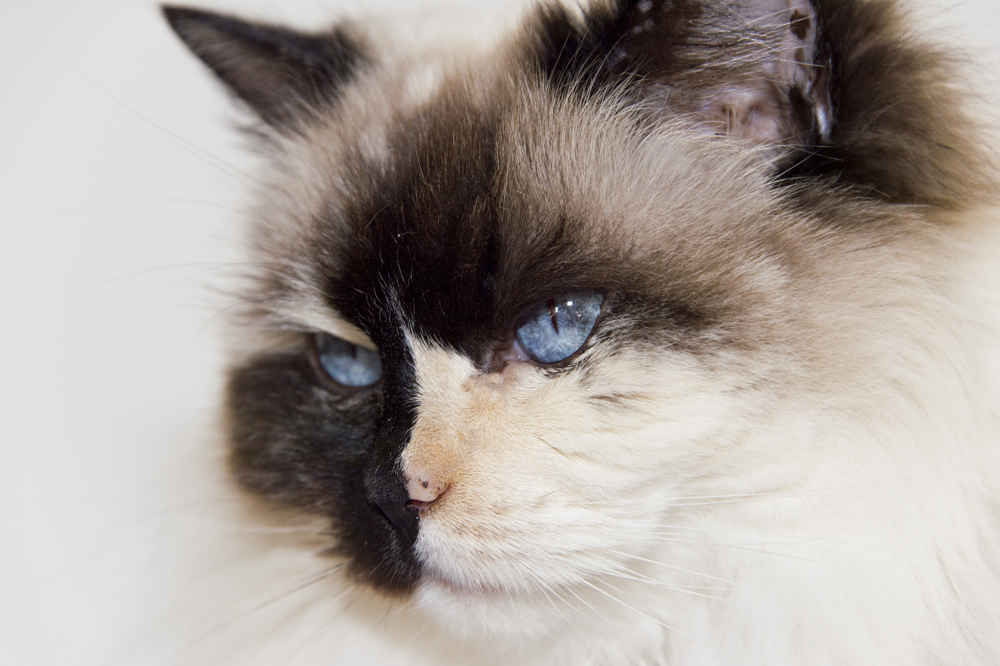
4. Ragdoll Tortoiseshell Cats Are Floppy
Try picking up a Ragdoll, and you’ll instantly discover why they got that name. They will melt into a furry puddle in your arms, exactly like a ragdoll! This trusting and relaxed behavior makes it hard not to fall in love with this breed.
 Does a Ragdoll Tortoiseshell Cat Make a Good Pet?
Does a Ragdoll Tortoiseshell Cat Make a Good Pet?
Ragdoll Tortoiseshell cats make excellent feline companions. They’ll be happy solo, with a family, or as part of a multi-pet household. Because they’re so laid-back, they get along with other animals as long as you introduce them properly.
They’re also perfect with kids and don’t mind being handled by tiny hands. Ragdolls are bigger than the average cat, so they’re not easily injured by roughhousing.
On top of it all, these cats are incredibly low-maintenance! That plush coat requires minimal grooming and doesn’t mat easily. Because they don’t have a dense undercoat, they don’t shed as much as other thick-furred cats. Health-wise, this is a hardy breed that can live up to 15 years.
Ragdoll Tortoiseshell cats are exceptionally social cats, and they thrive with human company. These kitties will be as content napping beside you as they will playing with their favorite toy. The dog side of their personality adds to the fun – expect your Ragdoll Tortie to follow you around the house, greet you at the door, and even learn a few tricks!
Final Thoughts
Ragdoll Tortoiseshell cats are beautiful cats inside and out. Their adorable coat pattern, sweet personalities, and low-maintenance requirements make them a treasure to own. If you’re looking for an affectionate, calm, and friendly cat, you can’t go wrong with adding a Ragdoll Tortoiseshell to your life!
Featured Image Credit: JFunk, Shutterstock


